Nissan Patrol review and buyer’s guide
The Nissan Patrol is a proven, rugged 4X4 wagon with pedigree, seven seats and a grunty, reliable engine. Buying a V8 Patrol will save you more than 20 grand compared with a LandCruiser.
The Nissan Patrol might be an old vehicle platform, but that doesn’t mean it’s redundant or past its prime. In fact, it’s quite likely one of the last of its kind and that’s why you should be asking yourself whether to buy a Toyota LandCruiser or one of these.
LandCruiser and Patrol have been battling it out for decades at the top end of the super-sized off-road SUV market segment leaders. But with a new Mitsubishi Pajero Sport on the horizon, the latest LandCruiser 300, and a bunch of highly capable, ute-based 4X4 choices on the market these days, has the Patrol’s time passed?
Lots of 4X4 wagons offer proper low-range off-road toughness, with clever features and ergonomic design, and most of them offer full seven-seat family facilitation. So how does Patrol stand a chance in the modern world?
Well, one reason is being about $30,000 cheaper than the biggest name in the 4WD business. It should be a no-brainer.
The Nissan Patrol is the more affordable option when you pitch it against the apparent ‘King of Off-road’, Toyota’s ubiquitous LandCruiser, which has soared in price in recent years. Sure, the current generation Patrol, codenamed the Y62, has been around now for over 10 years - damn near 15 years, actually - but Nissan has applied some updates in recent years in an effort to keep the old girl fresh. Or as fresh as you can make an old girl without reaching for the divorce papers.
This is their lates effort, a collaboration with Australian automotive engineering firm Premcar, born from some of the former employees of Ford Australia’s now defunct local operations. It’s the Patrol Warrior, and it’s philosophically what the Patrol should’ve always been.
Sales of the Patrol have grown substantially in the last three years, culminating in a record 2024 with 8293 units registered as sold, according to VFACTS data supplied by the Federal Chamber of Automotive Industries. That’s a 6 per cent increase over 2023.
Now, that might simply mean Nissan Australia has registered plenty of Patrols ahead of delivery, or simply to await potential buyers in holding yards, but the point is there’s clearly demand.
As a dealer, you don’t go to the expense of getting another 481 vehicle on a ship just for them to not have potential owners. Clearly people want the last of the V8 Nissan Patrol before it’s gone for good. Even December 2024 saw a 30 per cent increase in sales over 2023.
In fact, December 2024 was one of the rare months that Nissan Patrol actually outsold the Toyota LandCruiser, 726 units to 711 units of 300 Series which typically sells double that. It’s the same story with total sales last year. Patrol sold over 8000 units to the LandCruiser’s 15,000 units, but where the Toyota saw only a 1.5 per cent increase to annual sales, the Nissan saw a 6.5 per cent gain.
What does all of this mean for you? Desirability, resale value, availability of parts and a greater emphasis on Nissan Australia to honour the warranty and technical support of one of the most important, expensive and popular vehicles they’ve ever sold.
It also means your Patrol will hold its residual value better over time. Not as good as anything with a ‘TOYOTA’ badge across the front, but better than a Navara… or a Juke.
QUICK DISCLAIMER: While this is a review and guide to buying a Patrol, which is fundamentally a decent vehicle in itself, you should also be aware of the mediocre (but often poor) customer service record at Nissan Australia (and /or their dealerships). The brand has a reputation for occasionally treating consumer law as malleable, which it is not supposed to be.
However, there is an example of some good being done, where Nissan Australia dealt with this paint-related example >> You might be okay with this and willing you take the chance. And that’s okay, you may never have a problem, and/or they might also treat you properly (as they should).
A NEW NISSAN PATROL IS COMING IN 2026…
If you’re about to whip down to your local Nissan dealer to place that big, fat deposit of cash on a Patrol, you might want to be aware that the current Y62 is due to be replaced by an entirely new Y63 model, expected in late 2026 or early 2027.
You might also be glad to hear this is you’ve been hesitating on a Patrol. This might be the provocation you need to finally take action and join your mates on that epic ‘Big Lap’ by ordering yourself a Warrior knowing the new Y63 is going to be damn-near 20 years newer than when the Y62 first arrived back in 2010. Even compared with Toyota, a 17-year lifespan is utterly ancient.
This will be the seventh generation Patrol and will use a 3.5-litre twin-turbocharged petrol V6, which will be the primary engine option globally, ad most likely be the sole choice for the Australian market. A 9-speed automatic transmission will assist in making it both smooth and capable for heavy towing of the market-appeasing 3.5-tonne towing capacity and also reducing Nissan’s corporate average fuel consumption and emissions regulations.
The Y63 will have exactly the same wheelbase as the Y62, which should make you question if Nissan is just reusing the current platform in the context of the company’s highly public financial struggles of late. It would certainly be an economically rational decision to no have to re-engineer an entirely new platform when the current one is also quite capable. (Does that actually mean it’s an entirely new model, or a heavily updated facelift?)
The Y63 is 185mm longer and 35mm wider than the Y62, and between 5mm and 10mm taller. It’ll also be somewhere between 15kg lighter (in the base model) and 18kg heavier in the higher-spec grades - depending on market variability, and plenty of varying factors. Ultimately, it’ll still be a 2.6-2.7 tonne mammoth of a vehicle.
Given the marked sales success of the Y62 in the last five years, you might want to get to the serious end of your deliberations on buying yourself one before the opportunity passes and the factory begins the changeover process to the Y63, meaning new build orders would probably need to close in 2025.
Nissan has already begun selling an all-new model and one of the biggest changes being a switch from the current petrol V8 to a twin-turbo V6 petrol. Like the LandCruiser 300 Series >>, which went from V8 to V6 stepping up from the 200 to the 300 Series – albeit diesel – there has already begun a mad rush of buyers swarming to the Y62 in the lead up to the next-gen model no on-sale in the Middle East and North America.
If you've always wanted a V8 4WD, 2025 is the time to buy before it goes extinct.
Let’s check out the Patrol in detail to see if it still has what it takes to put up a fight against its arch nemesis, and have a close look at that V8 to investigate if it is actually as expensive to run as it might initially seem.
FEATURES & PRICING
Patrol Ti | $96,100 driveaway approx. | Max payload: 789kg | Kerb wt.: 2812kg
Features you get:
DRIVING
Adaptive Cruise Control
Auto emergency braking, forward collision warning
Lane keeping and departure warning
Blindspot monitoring , rear ross-traffic alert
Tyre pressure monitoring
Push button ignition w/ proximity smart key
OUTSIDE
18-inch alloy wheels, full size alloy spare wheel
Rain sensing wipers
Side steps, rear spoiler, front and rear mud guards
Automatic LED headlights with levelling, washers and ‘follow-me-home’ function
LED: front fog lights, daytime running lamps, combination tailights
Front and rear towing hooks
Manual tailgate
INSIDE
Black leather accented seat trim
Dual-zone climate control air-conditioning
Row 2 A/C controls
Centre console cooler box w/ rear-opening lid
Wireless & wired Apple CarPlay & Android Auto
15w wireless smartphone charger
Satnav (incl. Hema off-road navigation 30-day trial pre-loaded app)
10.1-inch LCD touchscreen, DAB+ digital radio
10-way electric driver seat adjustment
Manual rake/reach steering adjustment
Heated, electrically adjusted, auto-folding door mirrors
Front UV-reducing solar glass, rear side and back privacy glass
Front and rear parking sensors
Row 3 curtain airbags
2 x ISOFIX outer seats, 2 x top tether anchor points (row 2), 1 x top tether (row 3)
4 x 12-volt power outlets, 2 x row 2 USB-A charging ports
Front USB-C x 1, USB-A x 1
Patrol Ti-L | $113,300 driveaway approx. | Max payload: 742kg | Kerb wt.: 2861kg
Features you get in addition to the Ti:
OUTSIDE
Sunroof with privacy glass (electric one-touch power tilt & slide)
Roof Rails
Power operated tailgate
Puddle illumination light
INSIDE
Black leather accented seat trim
Driver's seat dual-position memory (incl. side mirror and steering pre-set)
Heated, electrically adjusted, auto-folding door mirrors
Front UV-reducing solar glass, rear side and back privacy glass
Front and rear parking sensors
Row 3 curtain airbags
2 x ISOFIX outer seats, 2 x top tether anchor points (row 2), 1 x top tether (row 3)
Adaptive Cruise Control
Auto emergency braking, forward collision warning
Lane keeping and departure warning
Blindspot monitoring , rear ross-traffic alert
Tyre pressure monitoring
Nissan Australia currently offers three different versions of the Y62 Patrol. All are at the upper end in terms of trim grade in Australia, starting with the Ti and then up to the Ti-L and then the Aussie-developed Warrior (based on the Ti). Compared with the LandCruiser, it’s basically like starting out from the VX grade.
And this is where things get interesting.
The Ti starts from $98,000 driveaway (when you do add those on road costs). Prices have crept up every year for the last few years, but are now fairly stable. It seems Nissan has bumped up the price incrementally simply because it wanted to and/or possibly when the LC300 arrived, which would’ve been a clear indication they could ask much more. Much like what we’ve seen in other brands and industries lately. Looking at you, Mazda, Toyota et al.
Compared with the LandCruiser VX, which starts from $118,301, the Patrol is an absolute bargain. And you still get a lot of vehicle for the money. Just under 5.2 metres of vehicle to be precise. But you also get a bunch of premium stuff: the leather seats, the electric seat adjustment for the front occupants, plus the auto emergency braking, digital rearview mirror, and blindspot monitoring.
But, if you want or need to carry stuff on the roof because you intend to use your Nissan as the off-roading gods intended, you’ll be needing roof rails to which you can then fit the roof rack crossrails and some kind of luggage pod, stowage basket or one of those flat platforms which are all the rage.
Well, you’ll need to cough up another $15,000 for that! It’s almost as if Nissan Australia knows you want those roof rails which only come on the top-of-the-range range, the Ti-L, which starts at about $111,600. But of you course you can’t just have the rails without the needlessness of the sunroof, electric tailgate and seat heating/cooling or position memory.
Patrol Warrior | $118,250 driveaway approx. | Max payload: 742kg | Kerb wt.: 2861kg
If you want a Patrol Warrior, you still go through Nissan Australia, rather than deal with a bunch of third-party aftermarket companies
So the prospective off-road adventurer who actually wants the roof rails, has to get all the other unwanted electrical guff (which also adds weight and reduces available payload. Or you could get the fully pimped-out Patrol Warrior by Premcar, which is another exercise in head scratching and number crunching - because despite adding over $20,000 to the base Ti Patrol’s pricetag, the Warrior-by-Premcar still doesn’t offer you roof rails.
Even though they’re telling you all about how ‘Made for Australian conditions’ the Patrol Warrior is, and despite infinity examples of Australian 4x4s out there with roof racks, Premcar can’t even offer you a bloody roof rack storage system on their $116,000 adventure machine.
$116,000 and still no roof rails like you’d find on an $80K Hyundai Palisade…
Also, the towbar Premcar adds (which they claim allows it to “carry a full-size spare wheel under the vehicle”, even though Patrol comes with one as standard), doesn’t even include a towball, by the way - that’s for the consumer to add.
The more hardcore Warrior version (modified and sold by Premcar to enhance off-road capability) is priced from $115,500 (add $700 if you want silver, white or black).
The Y61 and Y62 Patrols have always had a full-size spare. It’s stated in the Nissan Patrol brochure >>.
All of this price discussion, and what you get for it, might start to seem totally reasonable once you begin shopping around and seeing what the rivals are charging.
Mazda recently introduced the CX-90 and Kia launched the fully electric EV9. For example, both of these push through the $100,000 barrier in some trim levels. Who could have predicted Mazda and Kia pitching a $100k vehicle? The Toyota LandCruiser is now a minimum $100,000+ spend, just for a GX - with cloth seats. CLOTH SEATS.
You can easily spot the Ti-L from the Warrior, aside from the fact it’s stickered across the sides, simply by looking at the centre console. If there’s no woodgrain surrounding the transmission shifter and multi-terrain mode and 4WD low-range controls, that’s the Warrior. if it looks like a late-90s Jag in there, that’s the Ti-L or Ti.
You’ll laugh at how blatantly Nissan tries to hide the woodgrain in the official Patrol brochure >> But to be fair to Nissan and their tightarse lack of innovation in updating and refreshing such an old model, Patrol was designed back when woodgrain was still somewhat acceptable.
It’s the same time-based archaeology that is the reason you can’t find the officially quoted volume of the luggage compartment/s, because back when this dinosaur ruled the earth, those measurements weren’t prolifically taken.
ENGINE
Let’s focus in on the Ti for this review, although, all of the key specs are the same across the range. Its 5.6-litre naturally-aspirated petrol V8 develops 298kW, making it the most powerful vehicle in its specific class. According to VFACTS, it competes with the LandCruiser (227kW max), the Kia EV9 (283kW max), and the Land Rover Discovery (265kW max).
Fuel economy is listed at 14.4L/100km and it comes with a 140-litre fuel tank. It requires 95 RON fuel at minimum. With those figures you can calculate the possible average range, which works out to be 972km.
The LandCruiser does win in this area, with its official average of 8.9L/100km and 110-litre tank translating to a possible range of 1236km. However, these are based on the on-paper figures.
In the Patrol it is possible to achieve slightly less than 14.4L in the real world if you spend some time on the open road and away from city conditions. We’ll stick with the official figures for consistency.
To fill the Patrol’s tank it’s going to cost $294 from empty, based on today’s average fuel price of $2.10 for 95 RON, according to the fuel checker website for NSW. To fill the LandCruiser VX it’s going to cost $221 to fill its 110L tank based on an average diesel price of $2.01.
Based on the average yearly distance covered by Aussie motorists of about 15,000km, it’s going to cost you $4536 in fuel to run the Patrol per year. Again, based on the official consumption average. It doesn’t matter if you can’t achieve the 14.4 figure in the real world, we’re only looking at this from a comparison point of view.
In the LandCruiser it’s going to cost you $2683 to run it for a year, covering 15,000km. That’s a difference of about $1852 across the entire year. Now let’s throw in the initial prices to form a really juicy cluster pie.
The price difference between the Patrol Ti and the LandCruiser VX is $33,401, at the time of writing. That amount of money could get you 110,453km in the Patrol, based on the figures above. So that’s approximately 7.36 years of driving before you reach the cost of the LandCruiser VX.
As we’ve discovered the Toyota is more economical to run so we have to subtract the difference. Driving that distance in the VX is going to cost you, theoretically, $19,758.
So that means to buy the LandCruiser VX and drive it for 110,453km it’s going to cost you $138,059, excluding on-road costs and maintenance. The Patrol will cost $118,301 to buy and run for that distance. The overall savings means you get to drive the Patrol for a further 65,337km before you reach the total cost of the VX. By that time you’re probably looking to buy a new car.
This is all theoretically speaking and real-world experiences are likely to be different, but it gives you some idea of the headache-inducing dilemma presented by these two kingpins. It also clearly shows the Patrol is more economical to buy and run for the typical vehicle ownership period.
If you want to understand why diesel is usually the superior fuel against petrol, check this out >>
INTERIOR
If you need space, the Patrol offers a huge interior package. Headroom seems endless and the floor drops down so your feet fall into actual footwells, unlike in the ‘Cruiser which uses quite a high floor (better since the 300 Series, though).
However, there’s no mistaking this vehicle’s age. It looks like a boardroom from the 1990s. Or a current-day boardroom in America – it's surprising to see it doesn't come with an in-built cigar case. There’s so much wood. And not rich, exotic wood. This looks like the kind of wood-look fixtures you'd see in campervans.
There are a heap of buttons spread across the dash with a small (8.0-inch) touch-screen providing engagement for only the fundamental multimedia operations. And there aren’t many. No digital radio, no Android Auto or Apple CarPlay, and a basic surround-view camera system.
It does come with a reasonable level of safety tech, including blind-spot warning and low-speed autonomous emergency braking. But it doesn’t feature some of the more modern stuff like post-collision mitigation (automatic roll-away braking/steering), automatic emergency call assist, or pedestrian detection, like in the LandCruiser.
Some buyers might actually prefer this more basic concoction of systems as the latest stuff can be quite annoying.
The boot measures in at 468 litres with all three rows of seats up. That’s roughly the same full-size measurement seen in mid-size SUVs. In five-seat configuration you’ve got an enormous 1413L to play with, and then 2632L with all rear rows down. It’s big.
What’s going to be an even bigger hit with your kids is the novelty of the rear headrest DVD/multimedia screens. Yes, they’re from a bygone technological era, and yes, they probably have their own hand-held screens. But if you do have that inclination to reduce screen time or at least take your kids back a step to enjoy the fun of putting a movie on in the car, with your own headsets for the audio, there is fun to be had here, admittedly.
I'll help you save thousands on a new Nissan Patrol here
Just fill in this form. No more car dealership rip-offs. Greater transparency. Less stress.
DRIVING
The Patrol is surprisingly nimble for its size, thanks in part to its fully independent suspension setup with coil springs all round. It isn’t as heavy-duty as the live-axle rear end under the LandCruiser, but some experts will argue that this provides similar articulation and off-road performance.
Unless you’re competing in a 4x4 technical series, you’re unlikely to get stuck in either the Patrol or LandCruiser. The Patrol does rely more on smarts and electrical-based drive modes and programs, whereas the LandCruiser uses things like locking front and rear differentials.
It’s purely down to your personal tastes because, either way, you’re going to get through.
The Patrol offers 273mm of ground clearance, which is more than what most 4x4 utes offer, while the approach angle of 40 degrees is very impressive. The 23.3-degree departure angle isn’t – fit a tow bar to save your rear bumper.
What the independent suspension also provides is an excellent ride. This is a very comfortable SUV, and with big 295/70 tyres mounted on 18-inch wheels, there is heaps of give even through the nastiest of potholes.
Finally, the V8. It is a bellowing, growling and powerful beast. The noise is crisp and clear, but not too loud. It burbles like distant thunder at highway speeds and lets out a baritone gargle at higher revs. It is a marvellous unit.
Acceleration and overtaking performance are both near the top of the class, with 0-100km/h coming up in about seven seconds. The engine runs a high compression ratio of 11.2:1 and features variable valve timing, allowing it to rev right up to 6000rpm. Peak power is reached at 5800rpm, with 298kW, and the maximum torque of 560Nm is achieved at 4000rpm. It offers a very strong mid-range with great top end, but it also provides plenty of low-down grunt – although not quite reaching its absolute peak until 4000rpm.
The seven-speed auto transmission is reasonably responsive, kicking down when prompted but usually after a decent push of the pedal. It does – or can – clunk at low speeds when releasing the throttle. In all other conditions it is as refined as it needs to be.
SAFETY
The Patrol has airbags in the front and side curtains, and happily enough they do extend to row 3. Some notionally more modern 7-seaters still don’t extend airbags across the rear D-pillar.
Sadly, we don’t even know how well they work by today’s standards, because the last Patrol tested by ANCAP was the previous generation, the Y61, back in 2005 - 19 years ago.
Here’s one of the rare sightings of a Nissan Patrol being caught testing in the wild:
John Howard was still the PM back then…
In 2014, ANCAP updated the rating, but even back then when it did the frontal offset test at 64km/h, it was pretty bad - scoring just 6 points out of 16. In fact the passenger compartment was compromised to such an extent that the dummy (a much more primitive one than we have today) recorded injury outcomes that were almost every colour other than green.
The front wheel and tyre moved rearwards substantially and intruded into the driver's footwell, which ruptured
Obviously crash avoidance didn’t exist back then beyond your ability to hit the brakes hard enough to engage the ABS.
The rating ANCAP gave only applied to the 3-litre diesel V6 which, of course, is no longer relevant.
The Patrol back in the mid-2000s when it was tested, didn’t even qualify for the old pole test at 90 degrees - so absolutely do not go hitting any gumtrees or power poles side-on.
The Y62 remains ‘unrated’ to this day and will not be tested because with a new one coming out in the next few years, there’s no financial incentive for Nissan Australia to commit to crash testing one.
Obviously, in 2024 Nissan offers the Patrol with a bunch of fairly effective (although untested) safety equipment. There’s a driver’s knee airbag which some modern vehicles still don’t have, just for perspective, but then there is also more recent features
Autonomous emergency braking is there and it functions okay, as well as adaptive cruise control which is legitimately good for keeping your speed in-check with a set distance to the vehicle ahead of you on the freeway.
And it should go without saying that hitting a pedestrian with the slab-fronted Patrol’s enormous grille is not going to be a good outcome, and it has more than just physical and mental consequences for the pedestrian, it’ll also change your life forever too. So pay attention in the even Nissan’s untested auto emergency braking fails.
There is a long list of other safety gear on Patrol, such as blindspot warning and some kind of ‘intervention’ (which presumably hits the brakes if you merge without indicating into someone’s path), rear cross-traffic alert and a tyre pressure monitoring system.
CONCLUSION
The 2023 Nissan Patrol is an honourable and respected contender in the large SUV segment, offering a blend of luxury, strength and capability. Its classic design, very spacious interior, and powerful V8 engine contribute to its appeal as a grand, all-terrain cruiser. However, in a market that is evolving rapidly, the Patrol falls short in some key areas.
The dated infotainment system, lack of modern safety tech, and a thirst for fuel are aspects that may deter some buyers. On the other hand, traditional buyers and lovers of ‘old-school’ driving characteristics and features will enjoy it tremendously.

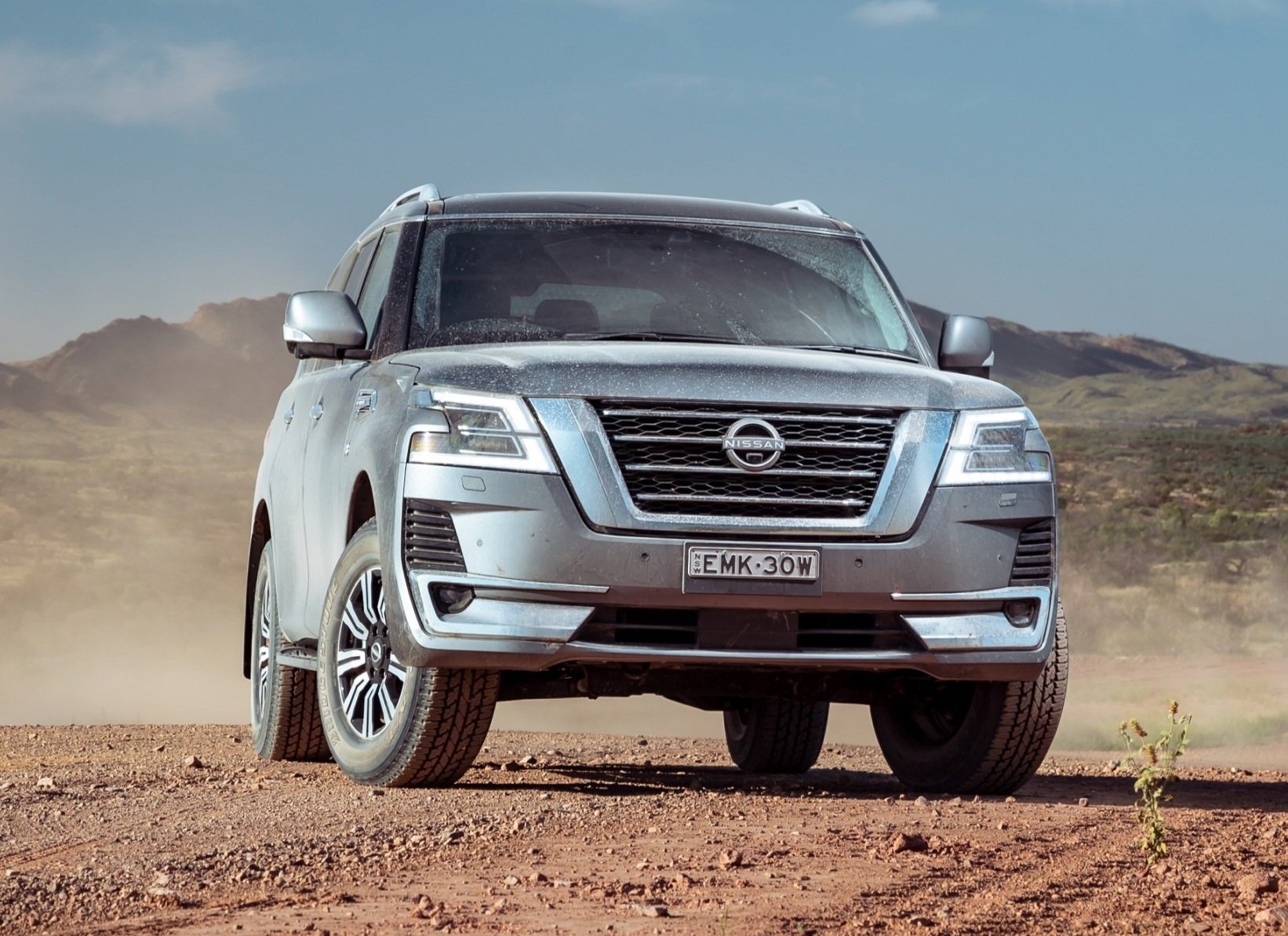
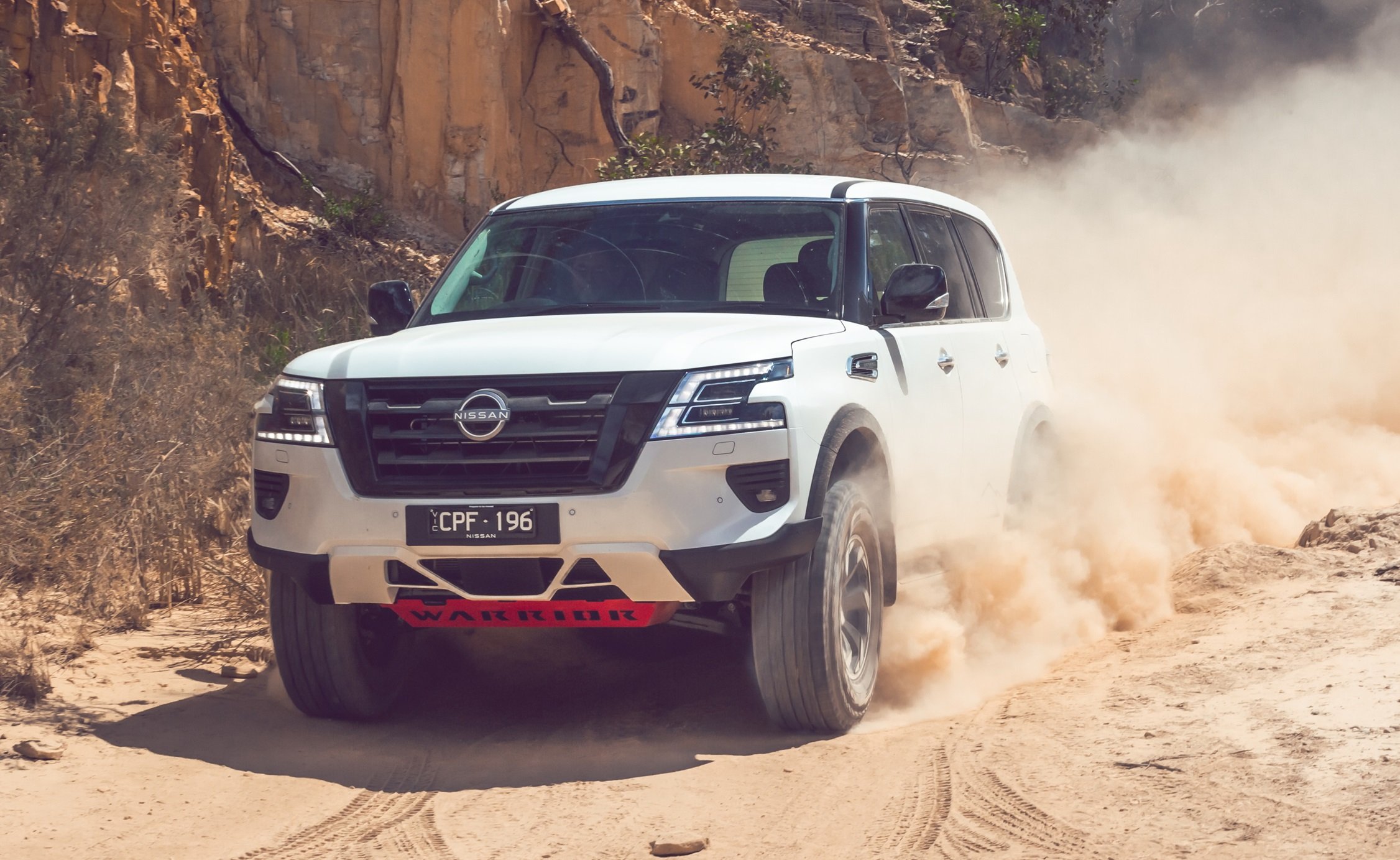
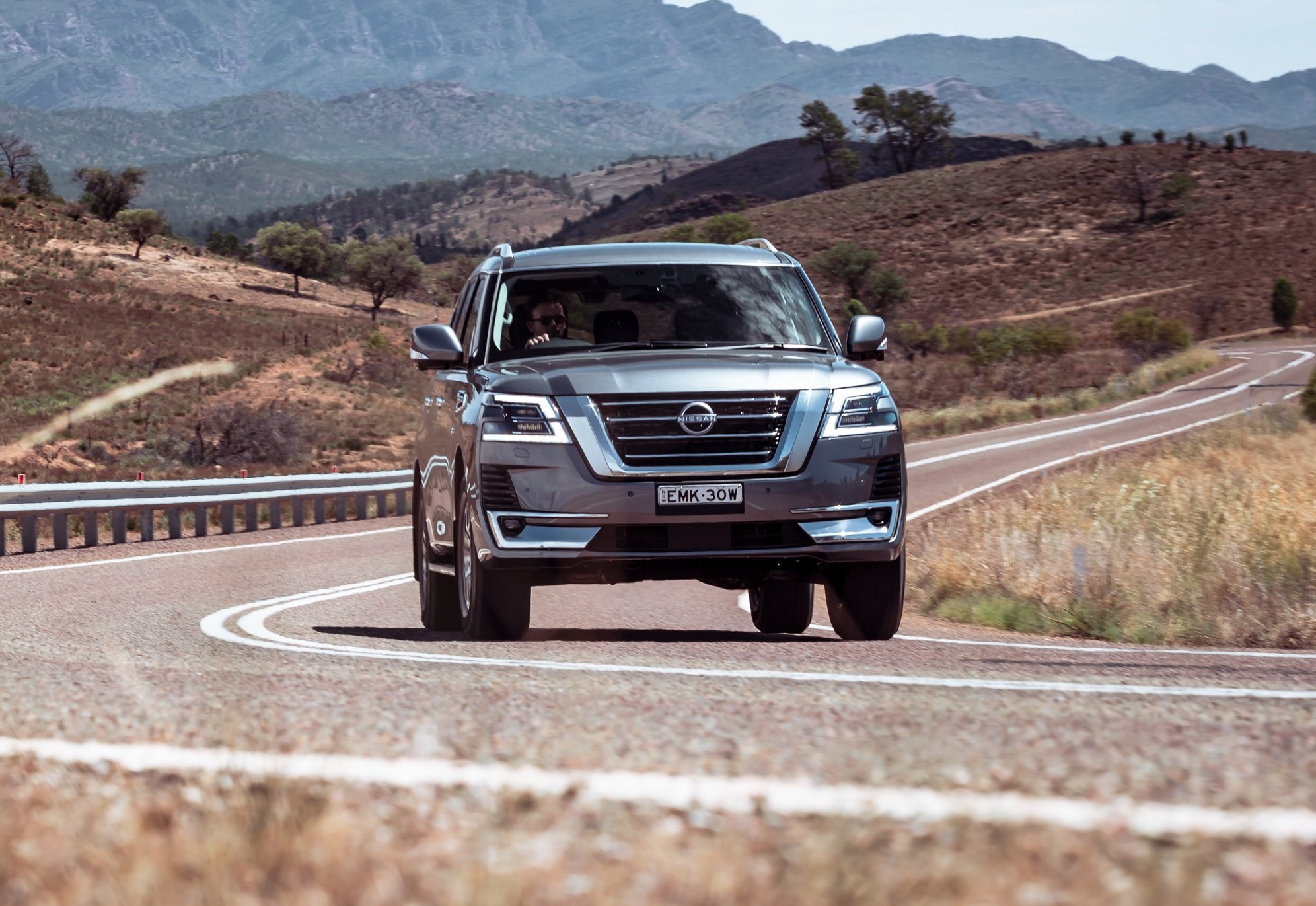
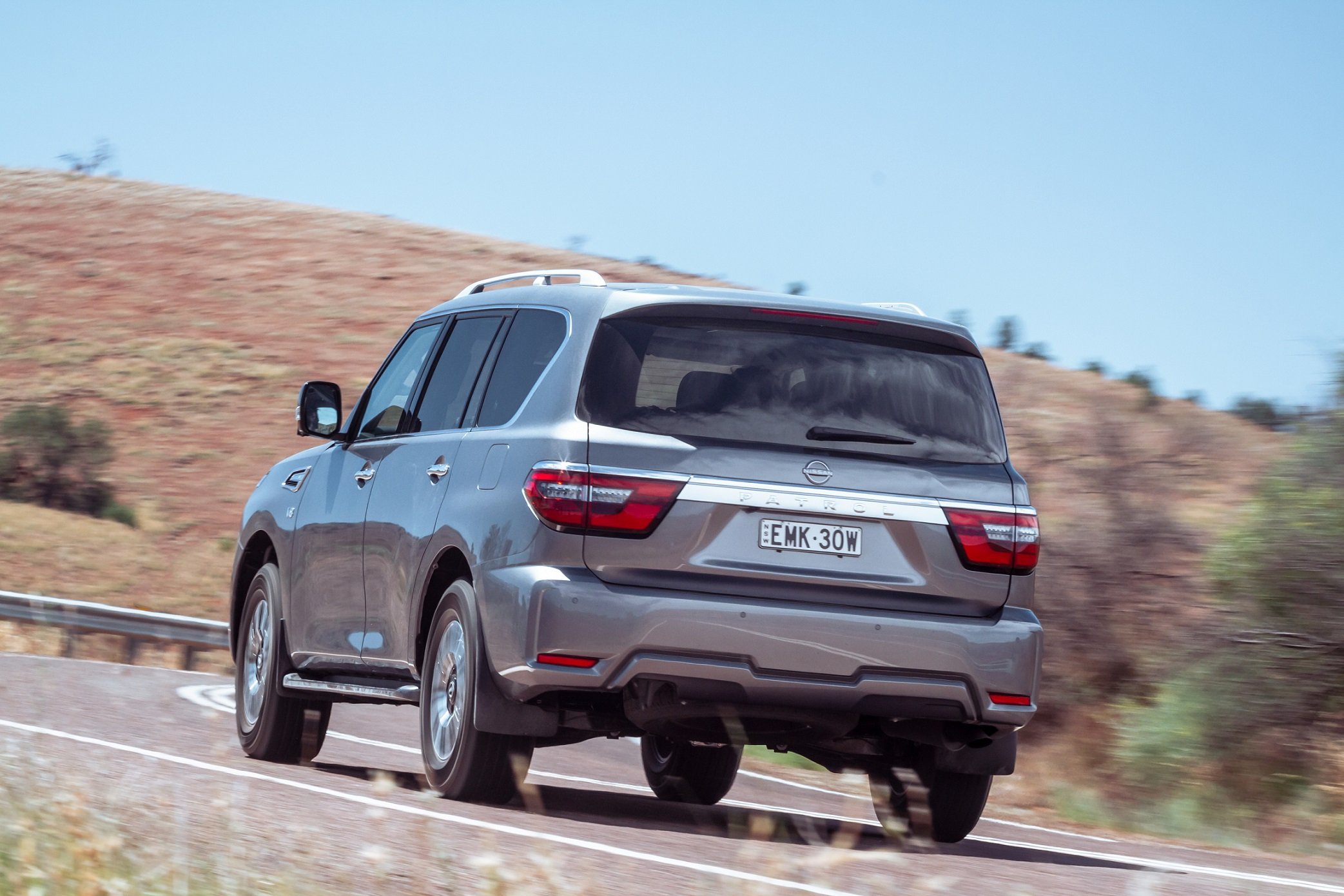





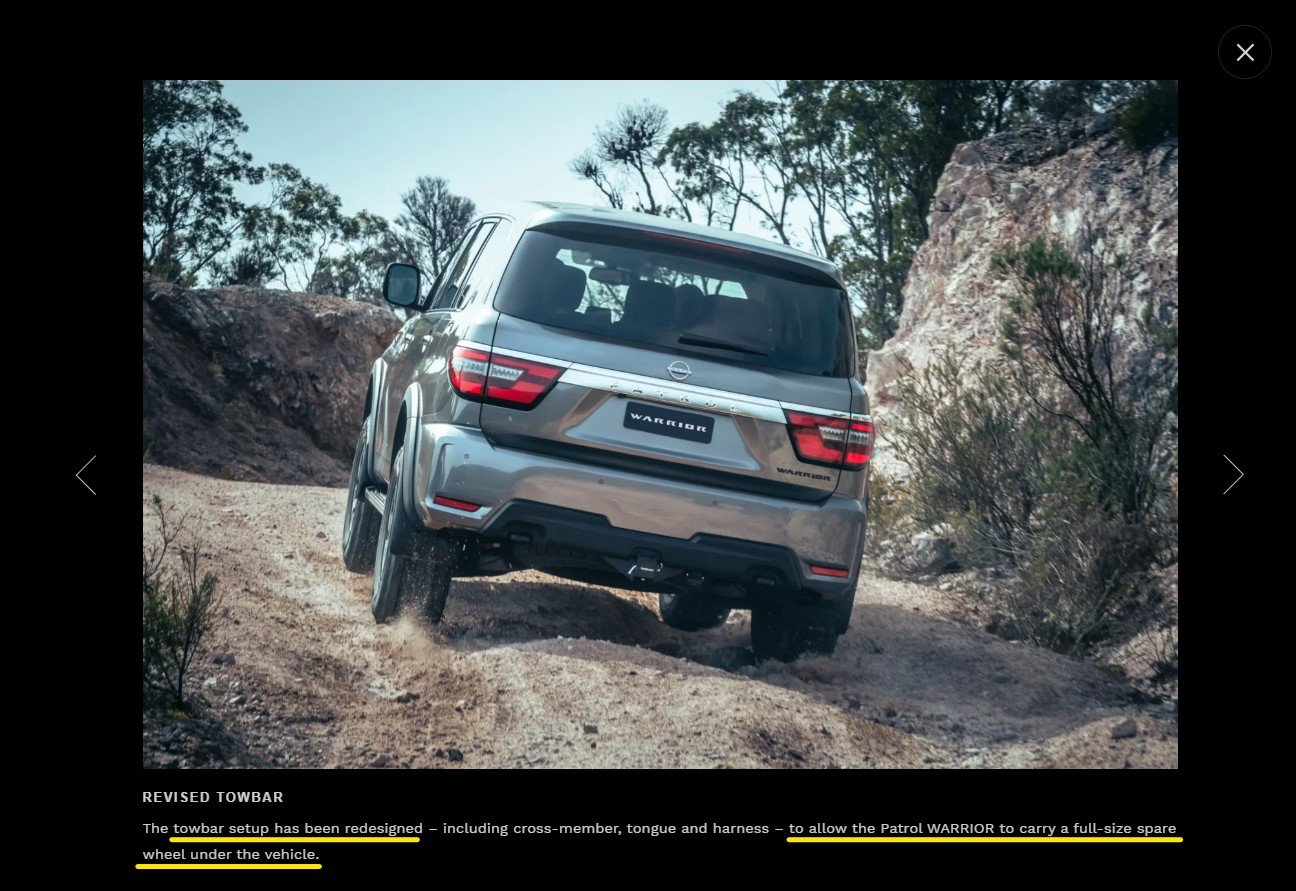
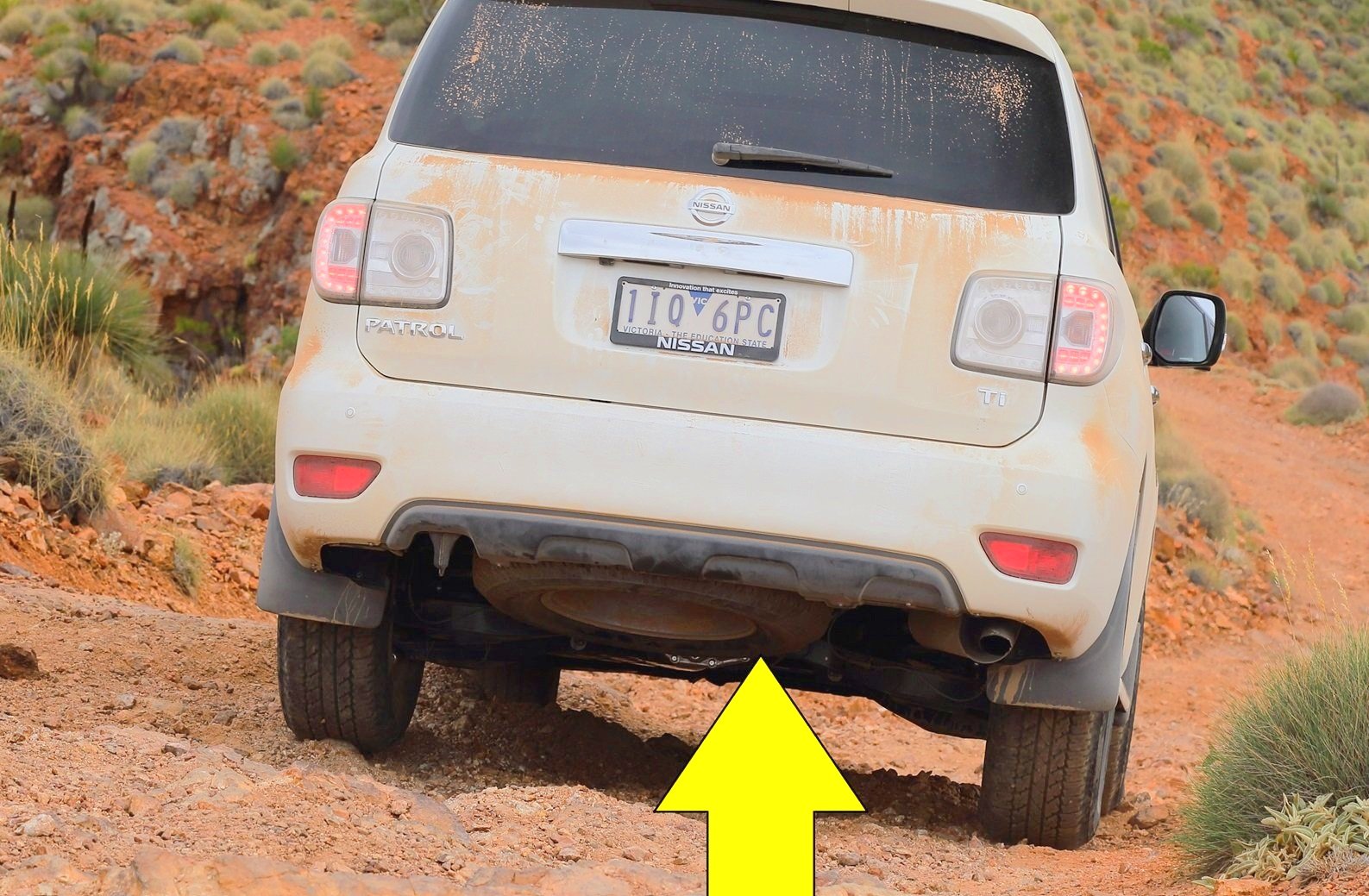
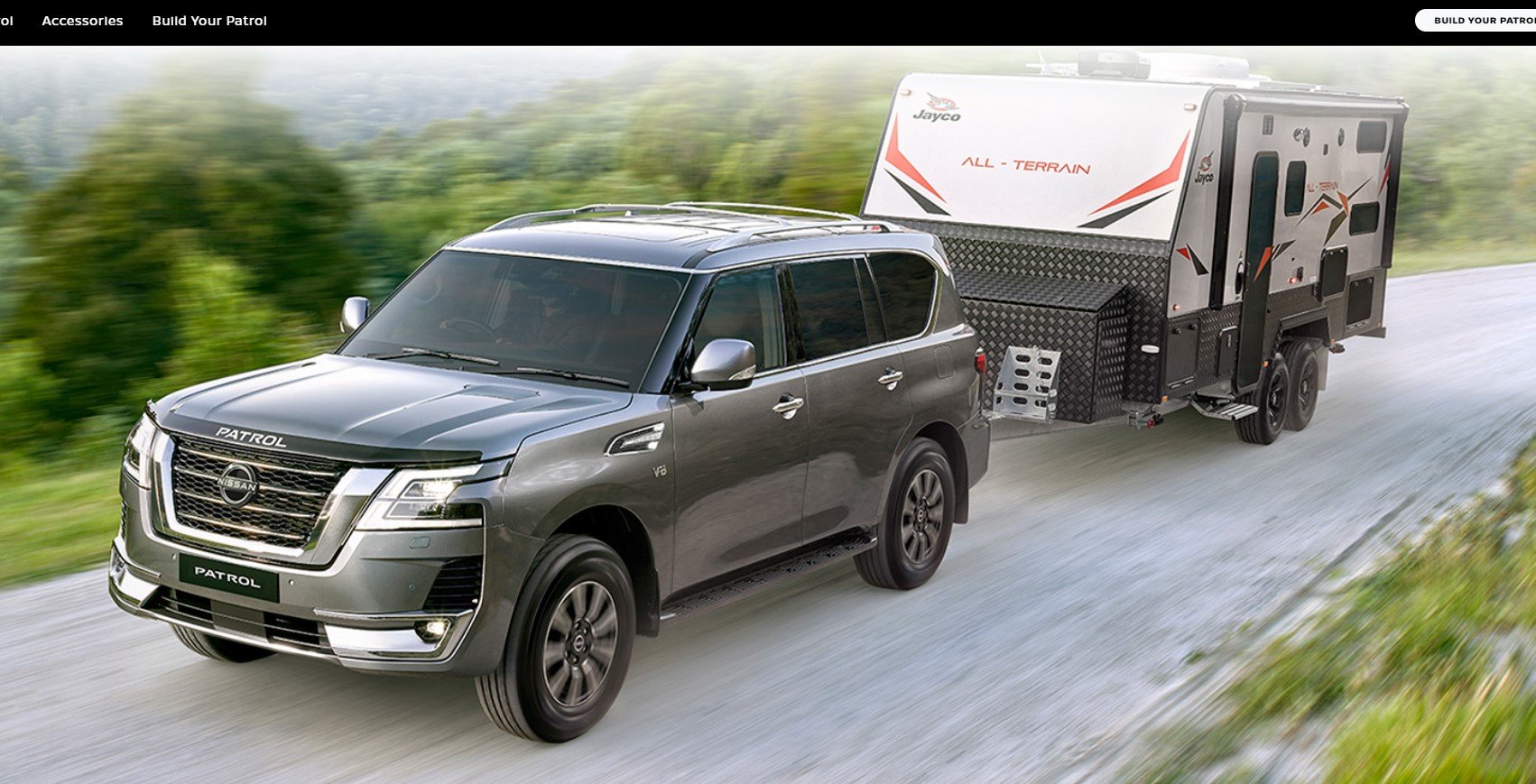






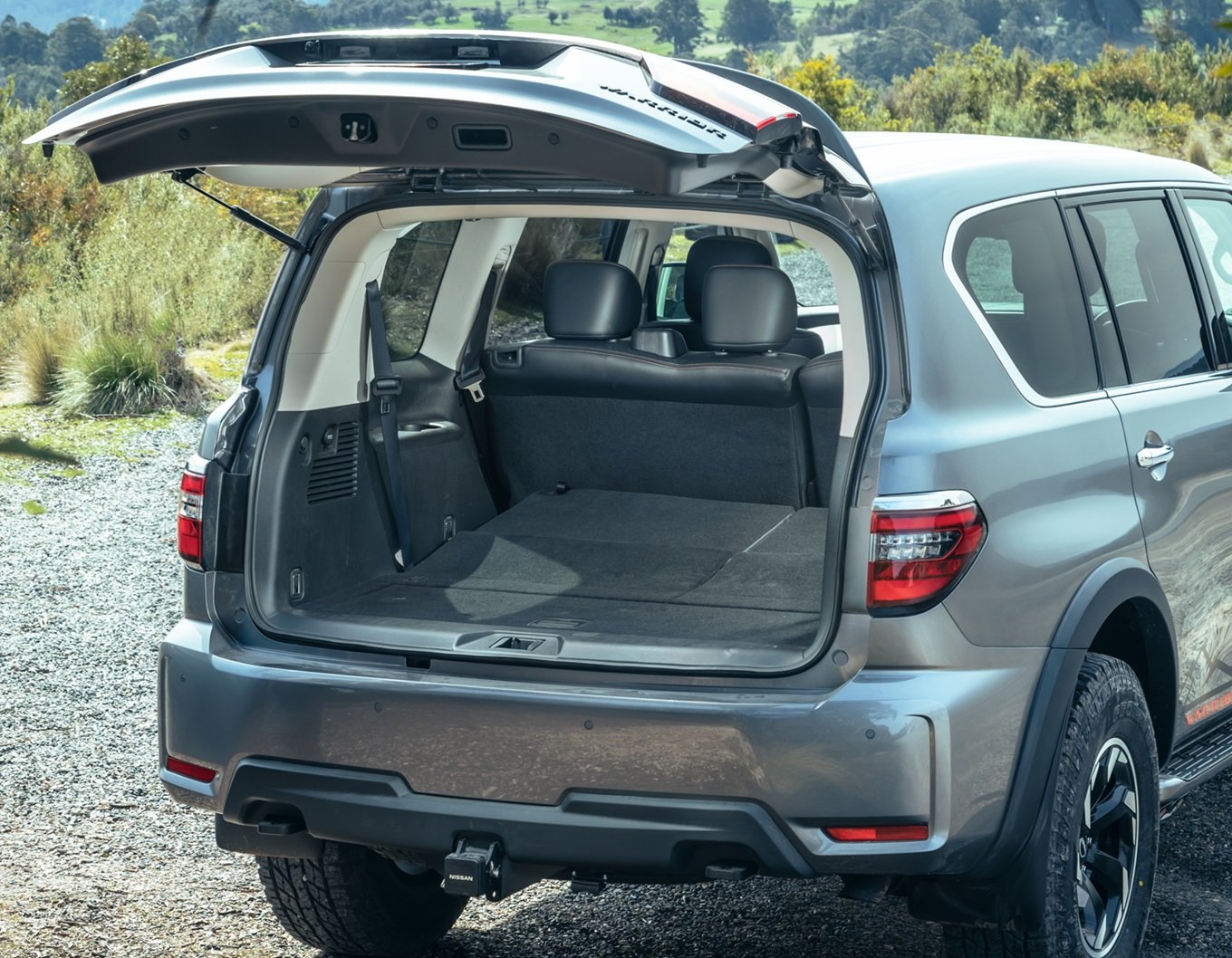


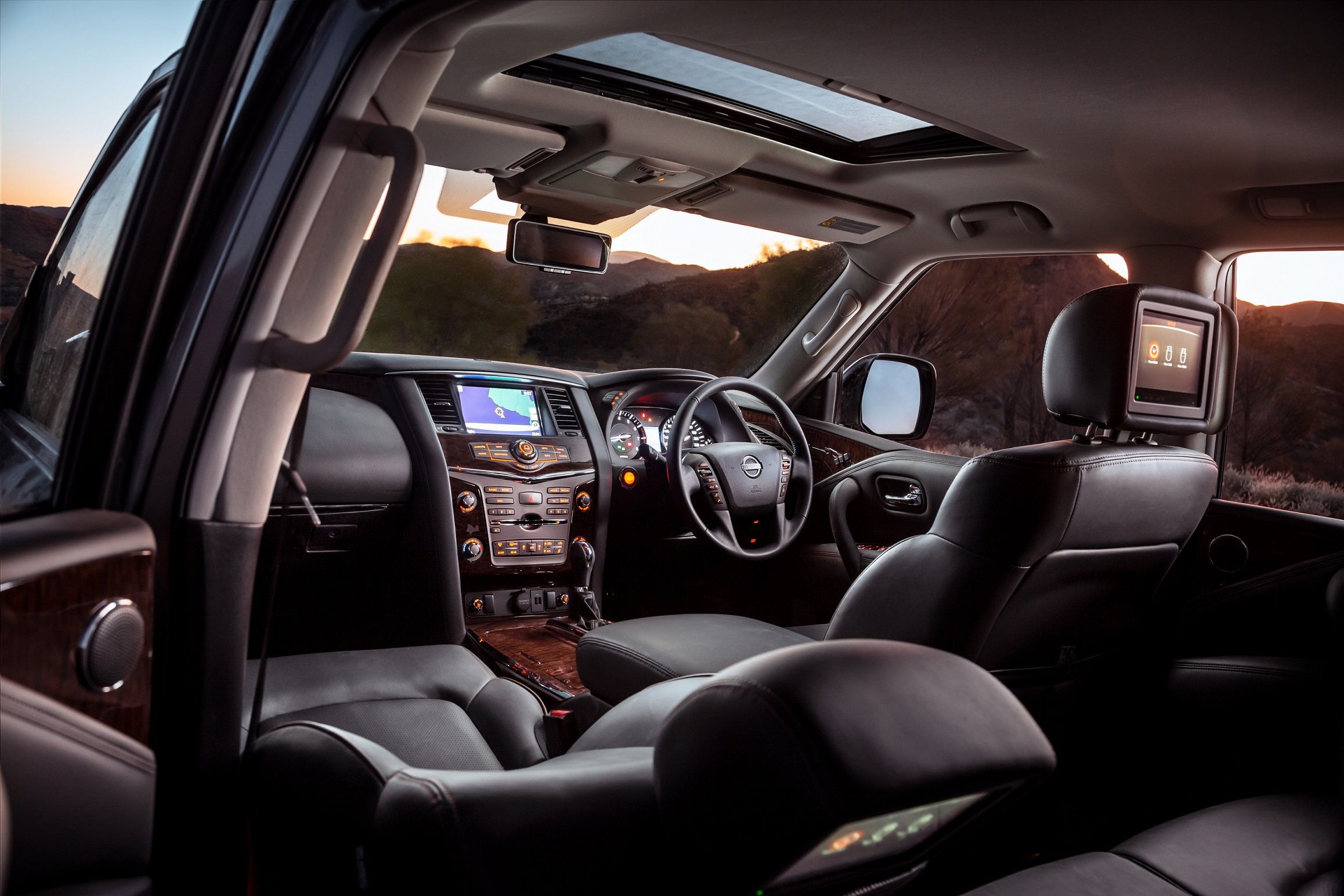
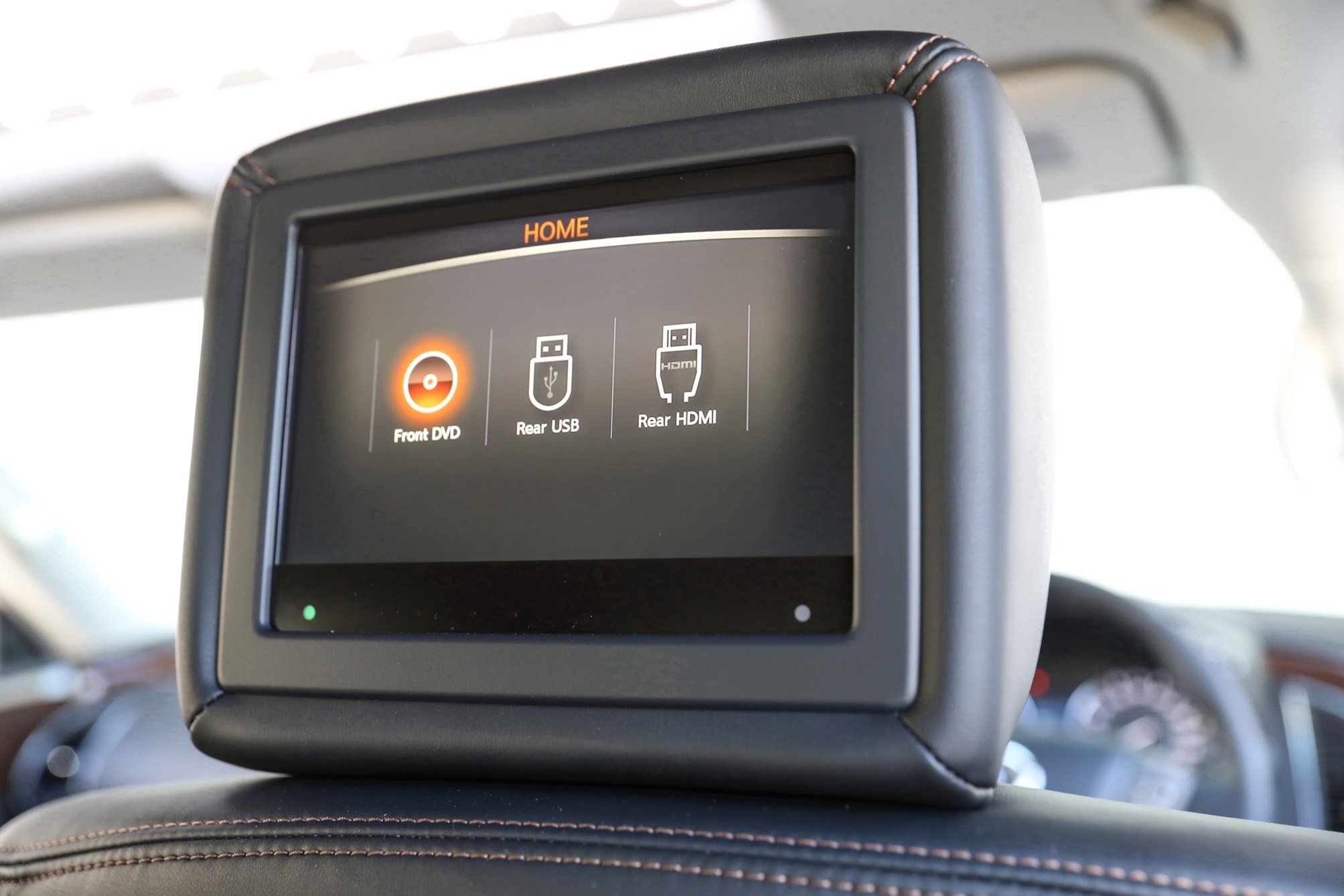
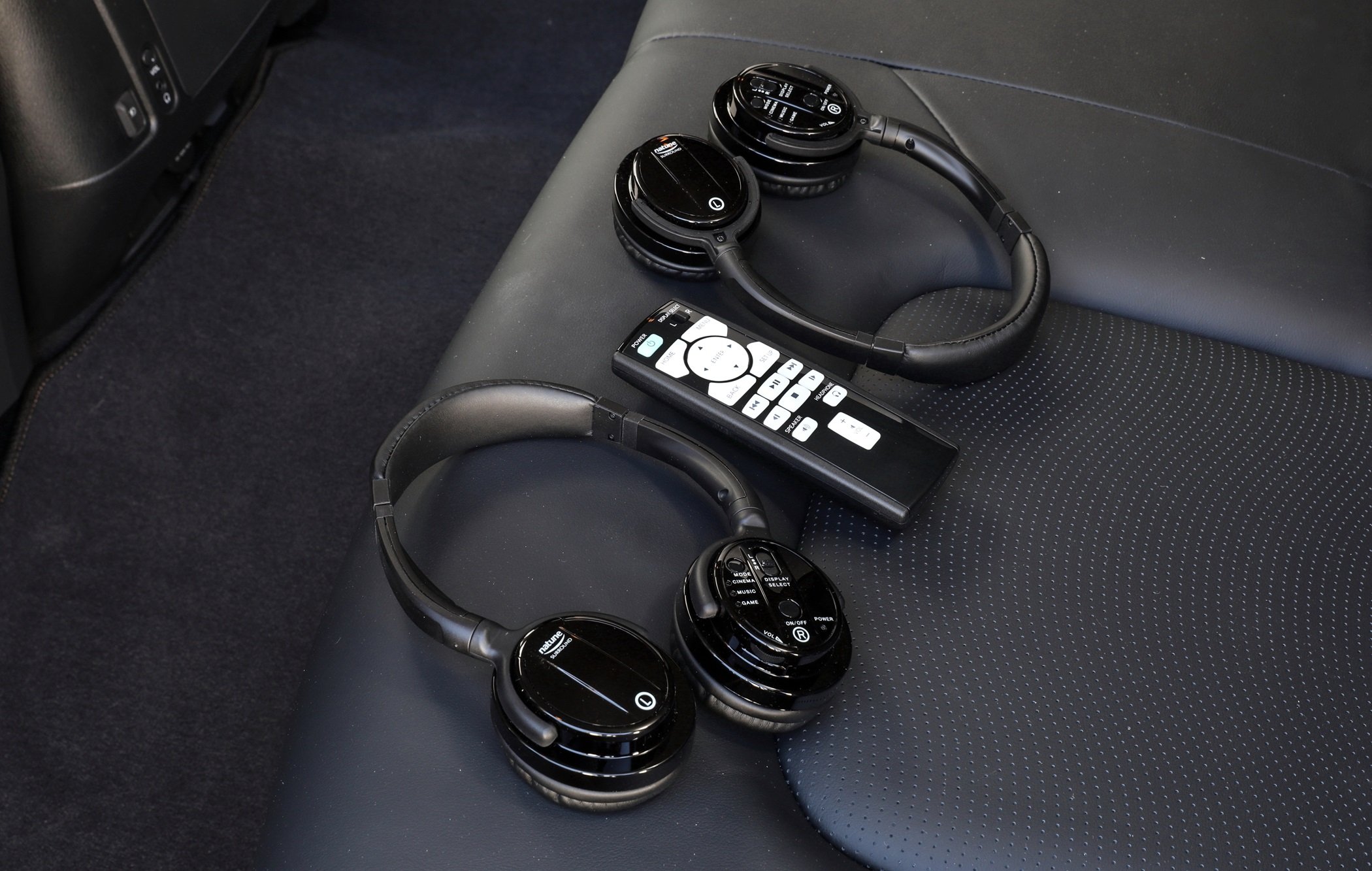
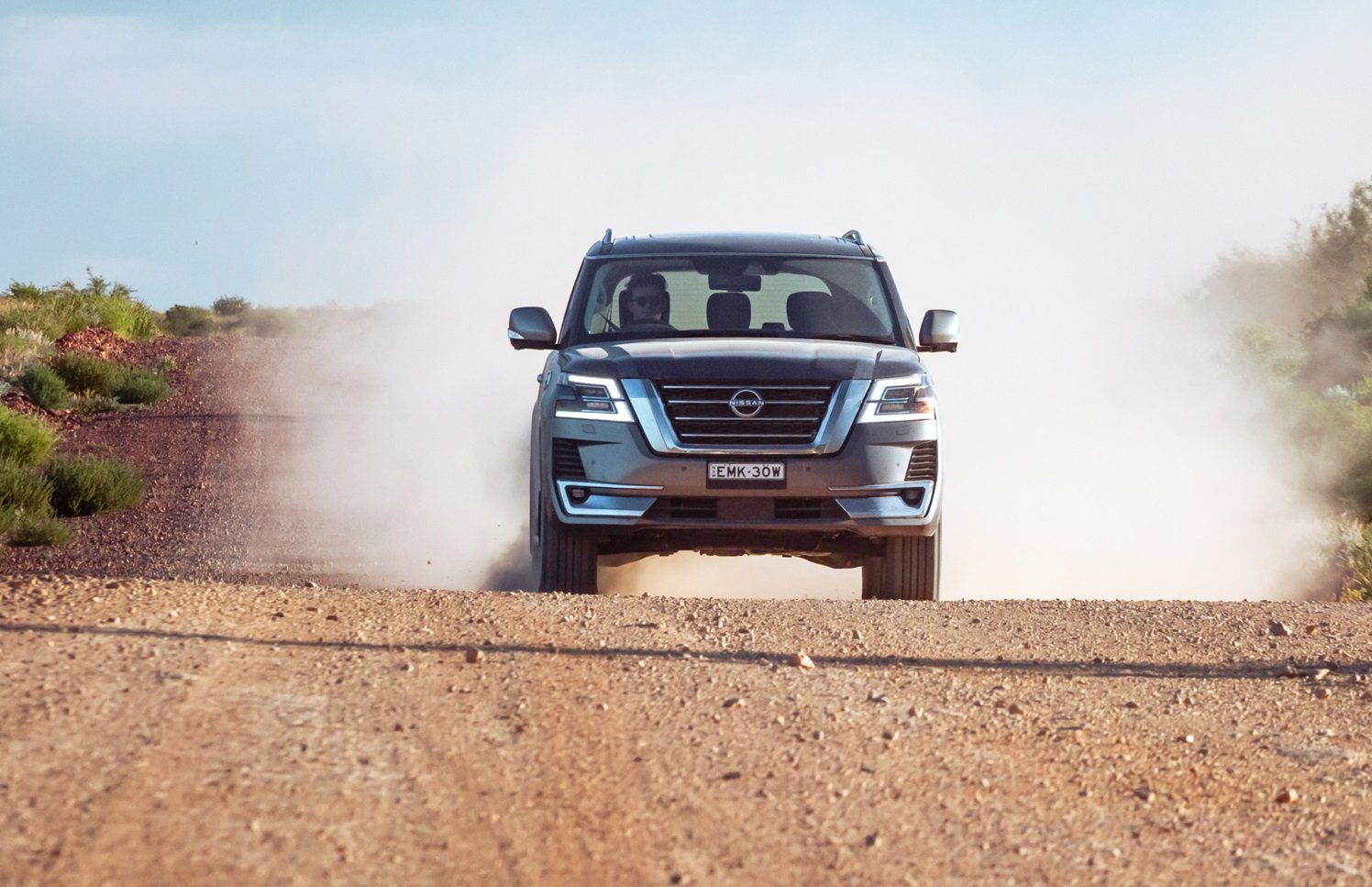
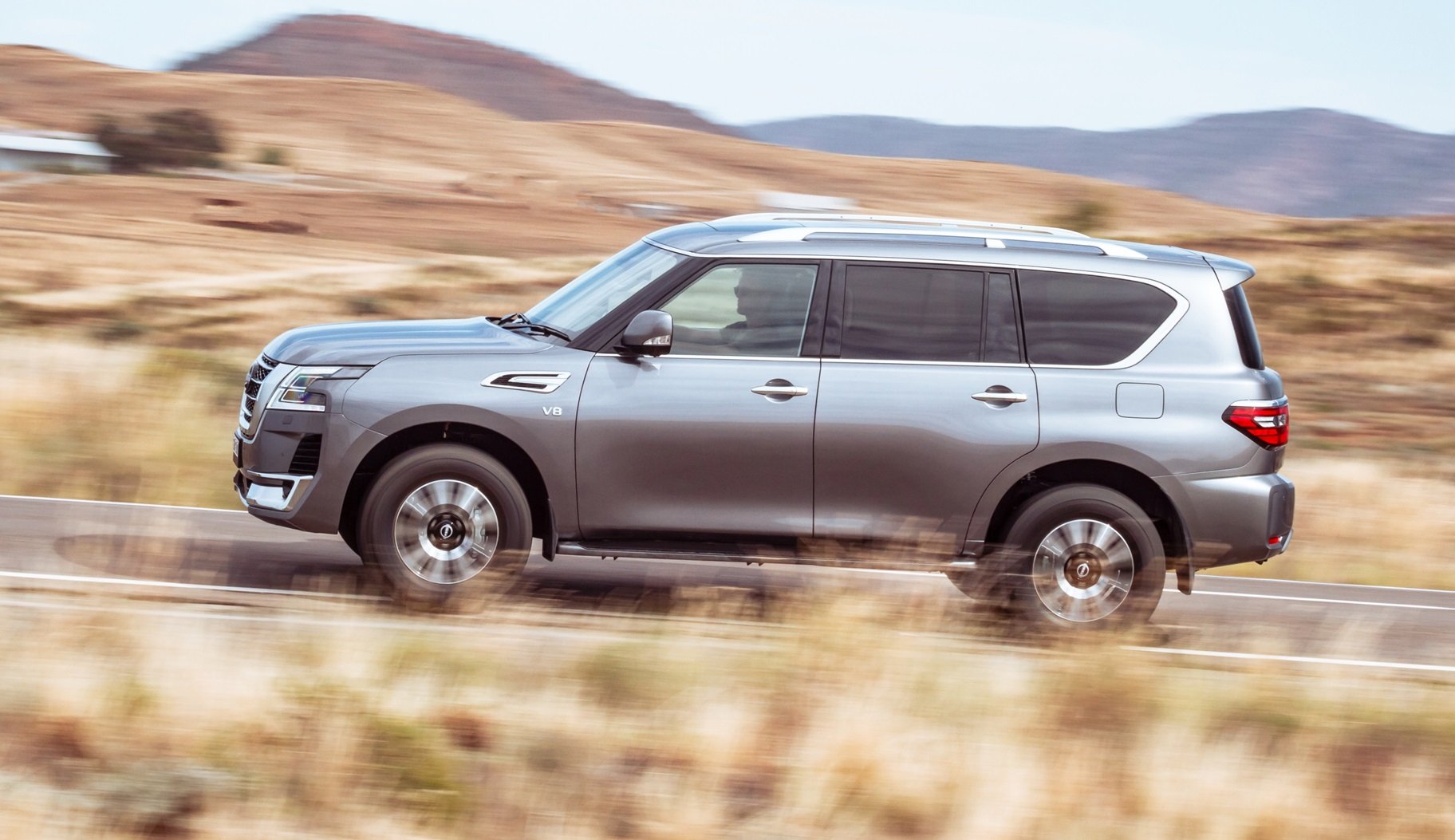
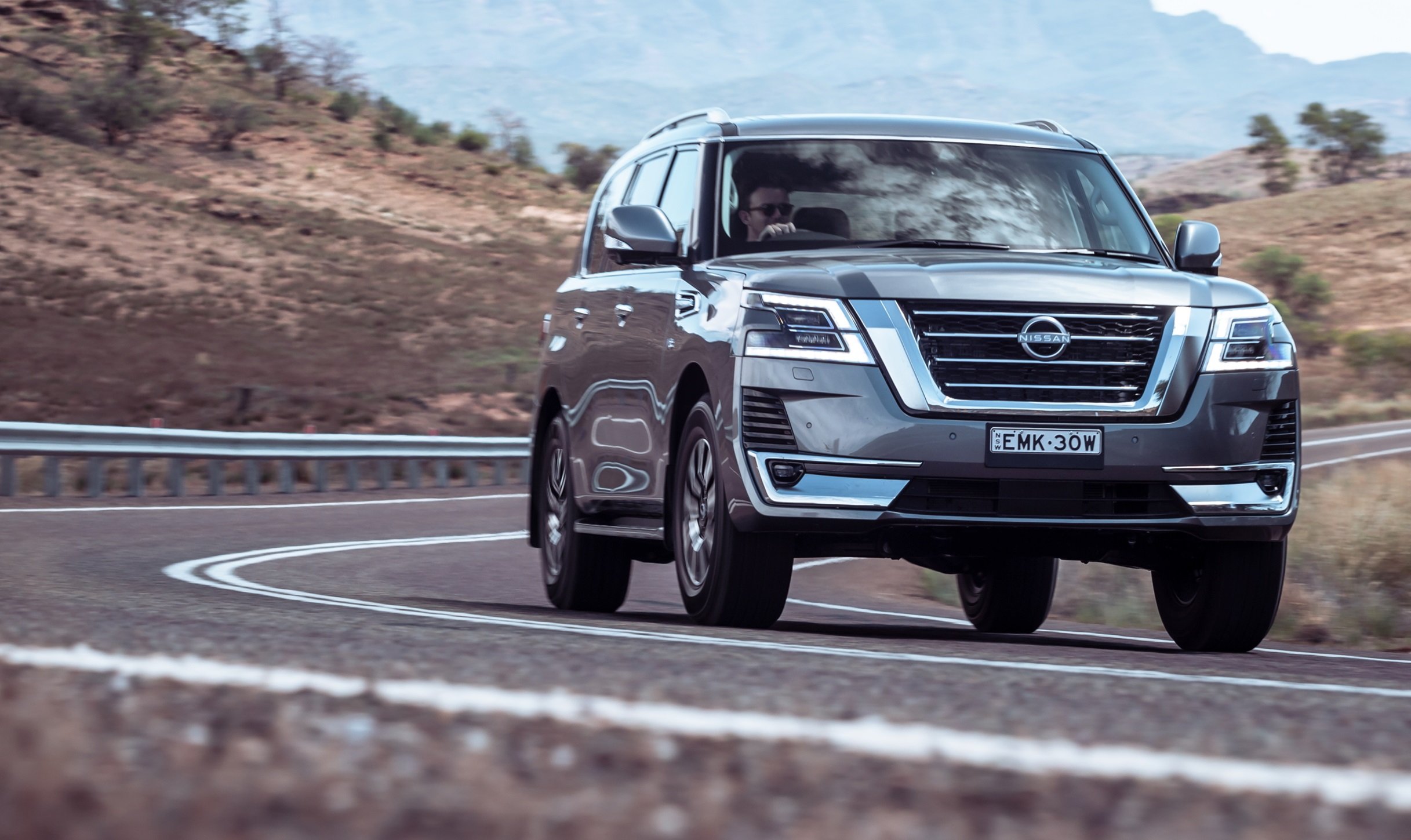





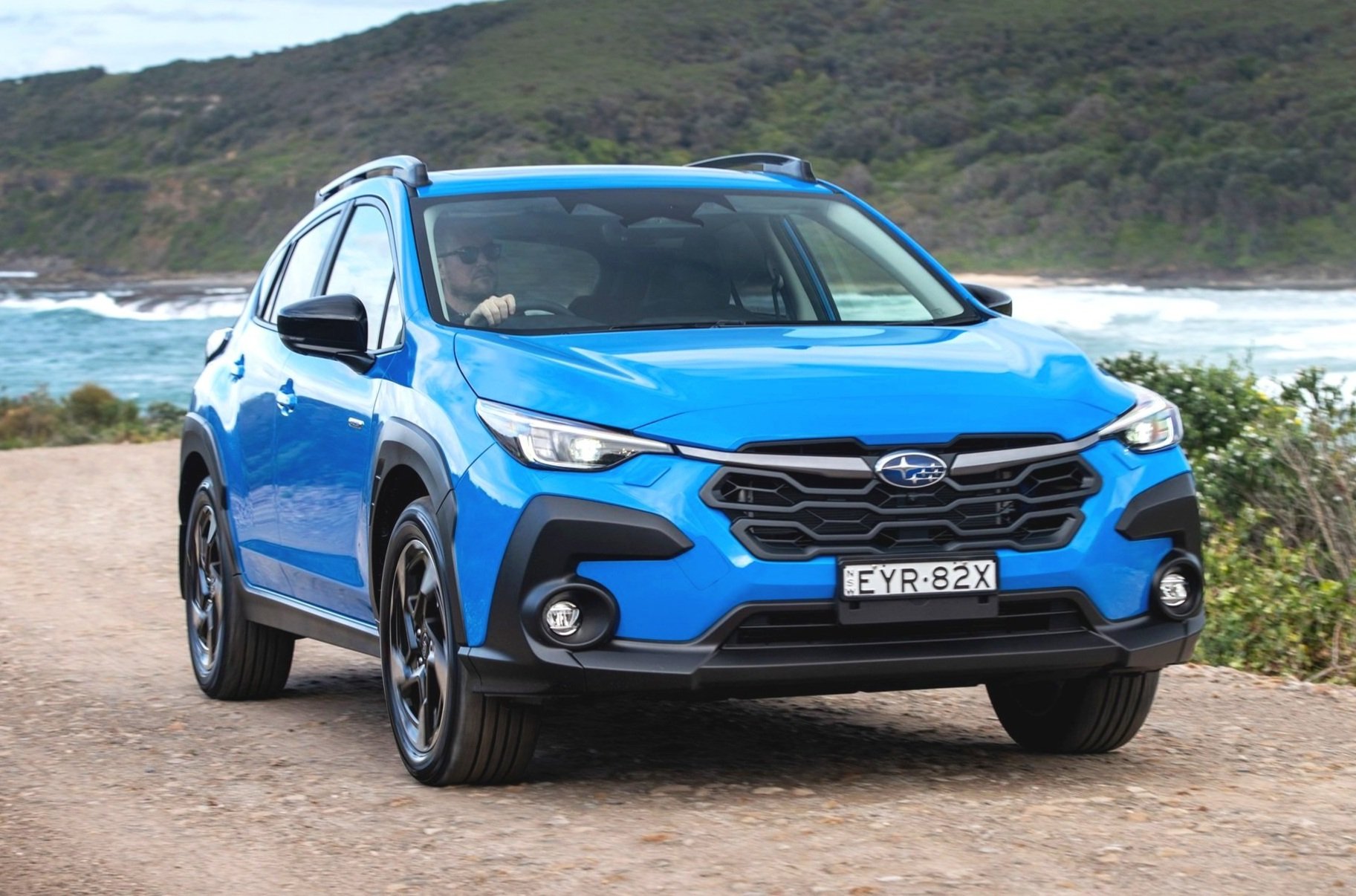
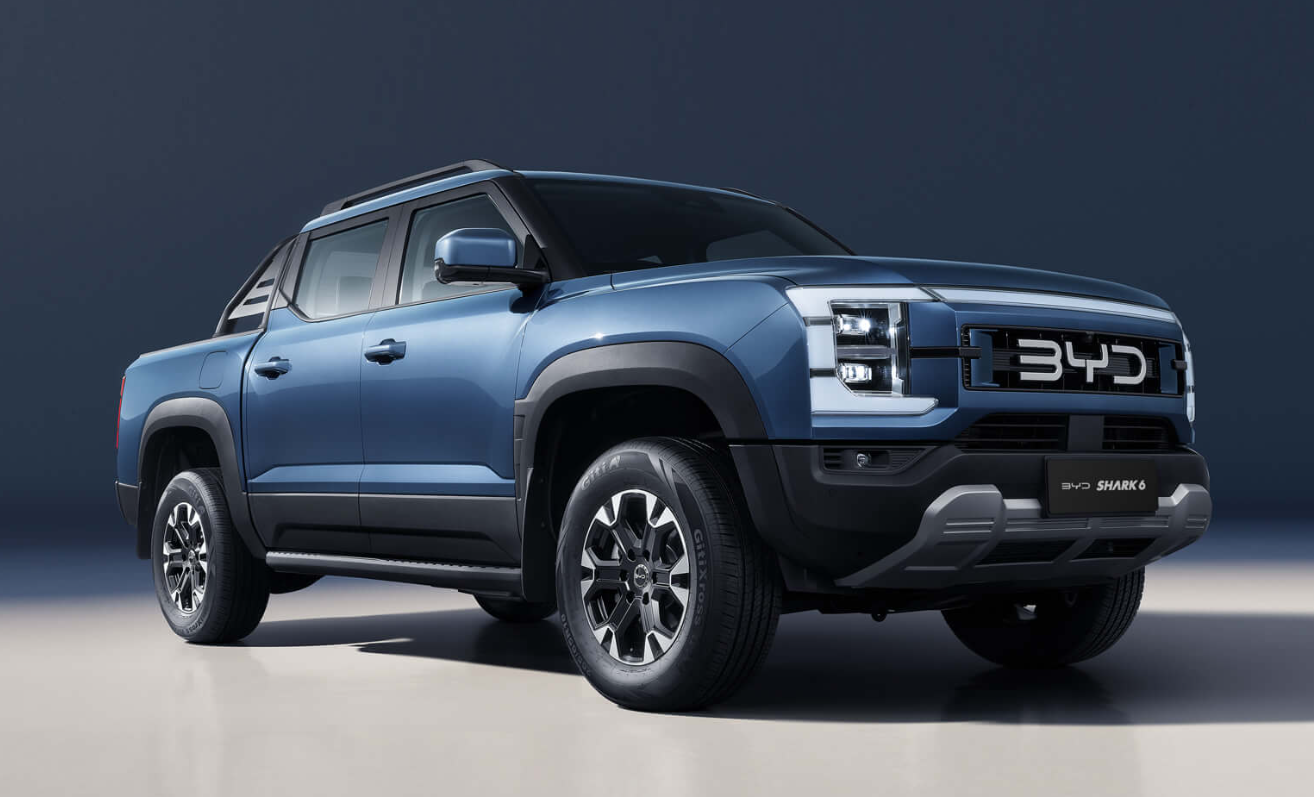



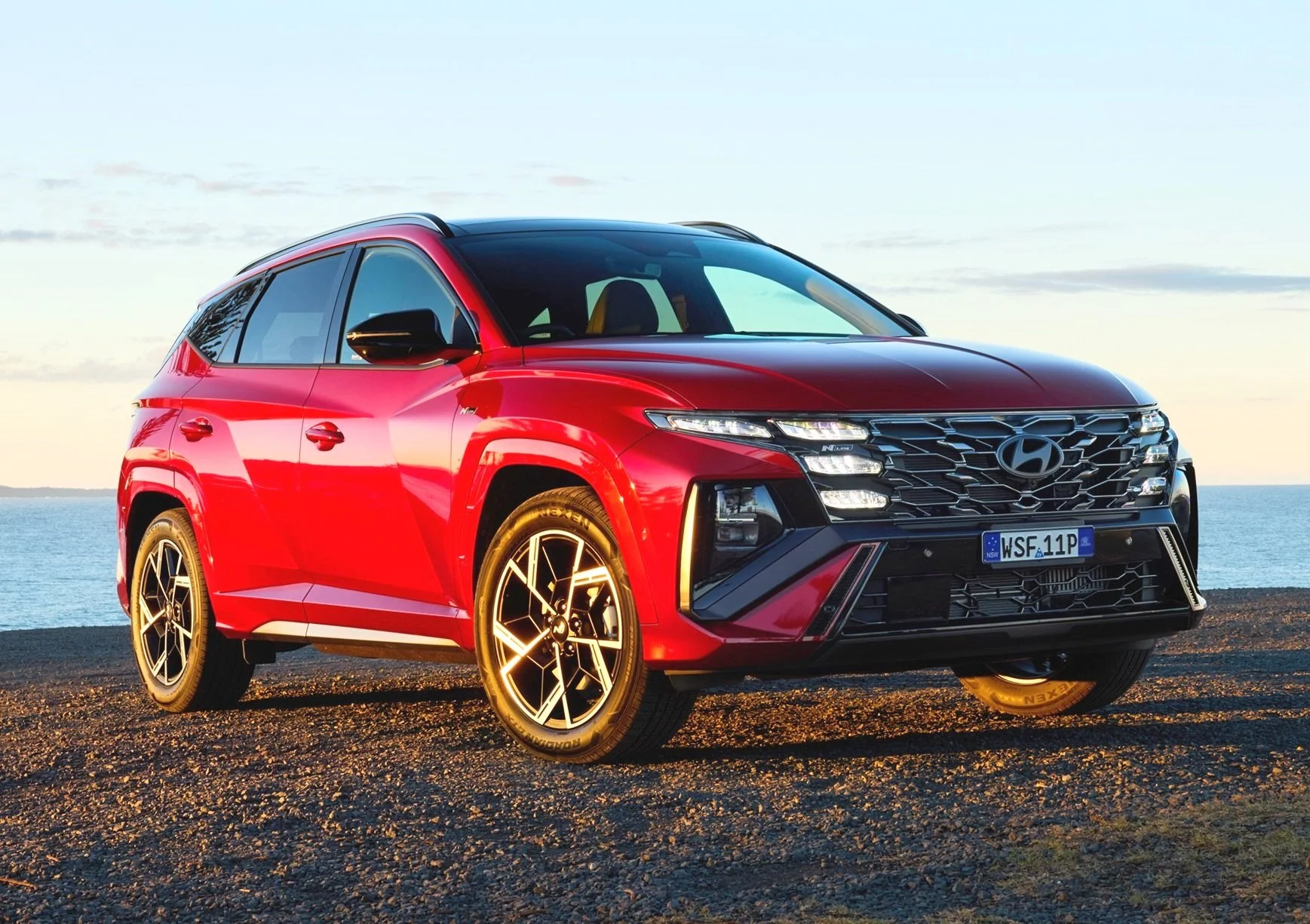


2025 is the year of new Chinese car brands arriving in Australia and the plug-in hybrid Jaecoo J7 is a promising medium SUV for families. Here’s what you need to know about these upstart carmakers and why it matters…